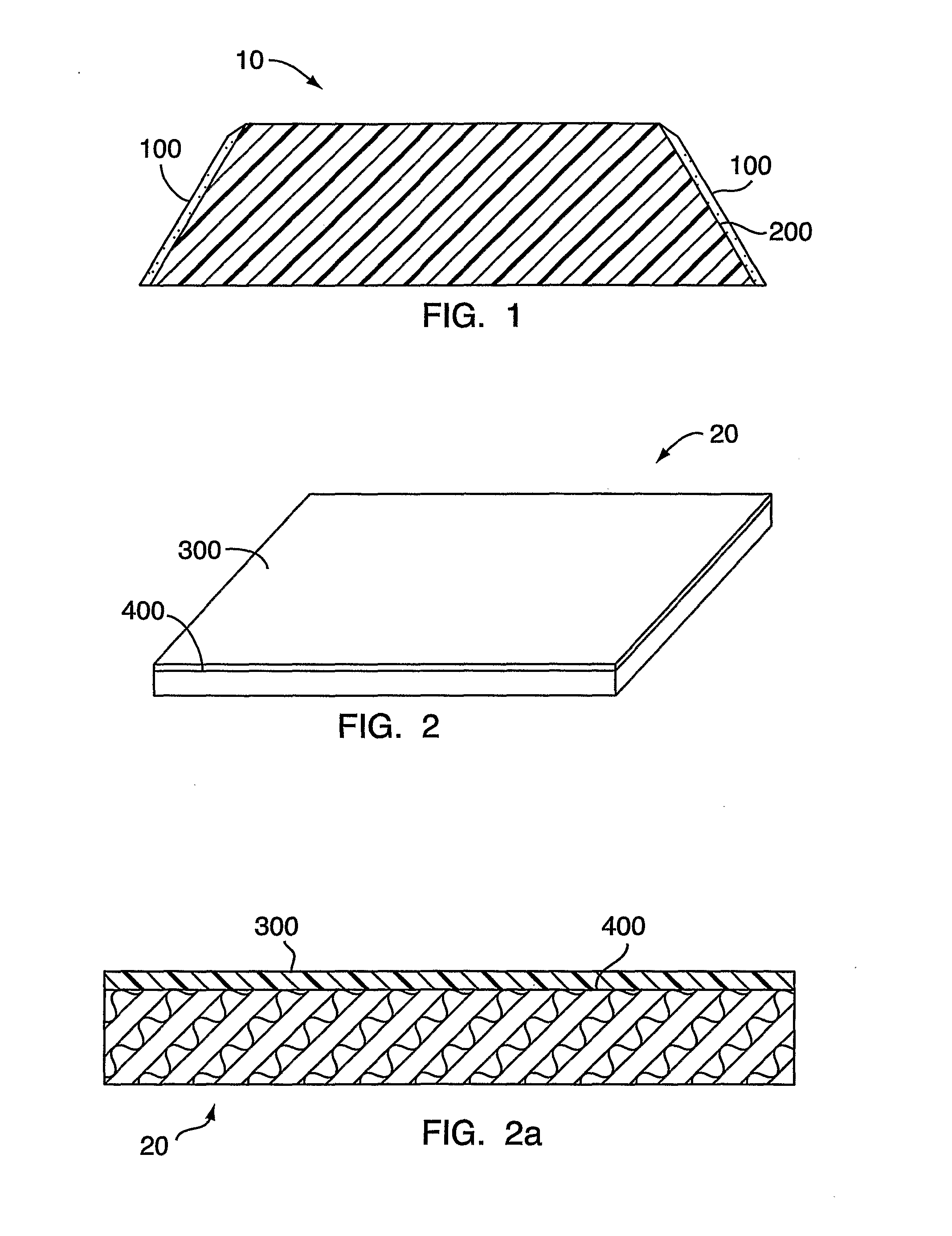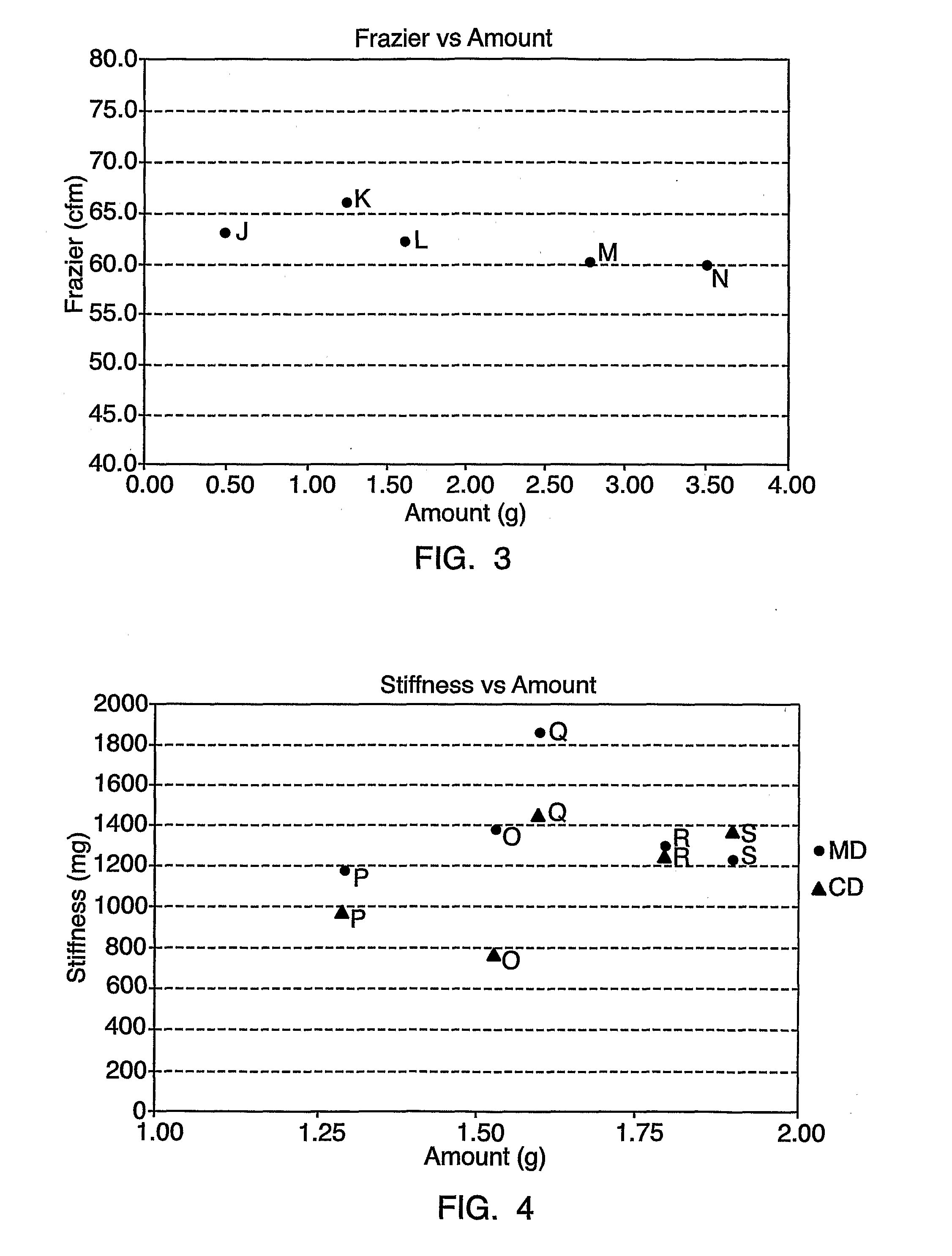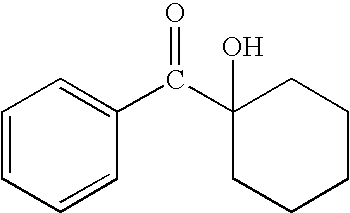Uv Curable Coating Compositions
a coating composition and ultraviolet light technology, applied in the field of ultraviolet light curable, abrasion resistant coating compositions, can solve the problems of damage to such molded or cast objects, conventional materials used to make molded or cast parts, and lack of uv curable compositions in the state of technology
- Summary
- Abstract
- Description
- Claims
- Application Information
AI Technical Summary
Benefits of technology
Problems solved by technology
Method used
Image
Examples
example 1
[0050] This example describes various formulations of components used to make UV curable compositions of the present invention. Table 2 depicts the weight percent of each of the components combined to form the compositions (Compositions A-G). The viscosities of Compositions A-G are desirably between about 5 and 3000 cps. Composition G, for example, had initial viscosities at 25° C. of about: 50 cps (25 rpm); 55 cps (50 rpm); and 53 cps (250 rpm).
TABLE 2ComponentABCDD-1EFGTrimethylol-80.0074.2074.1076.2076.2076.1075.6071.20propanetriacrylate with50% silicaN,N-dimethyl20.0018.8018.8018.8018.8018.8018.8023.80acrylamide1-benzoyl5.005.005.005.005.005.005.005.00cyclohexanolDiphenyl2.002.002.00(2,4,6-tri-methylbenzoyl)phosphineoxide1Surfactant0.100.100.10Hydroxy-0.50benzotriazole2
1Available from BASF Corporation as Lucirin ® TPO
2Available from Ciba Specialty Chemicals, Inc. as Tinuvin ® 900
[0051] After combining the components, the resulting Compositions A-G were applied to a surface b...
example 2
[0055] This example describes another formulation of components used to make a UV curable composition of the present invention. Table 5 depicts the weight percent of each of the components combined to form the composition (Composition H).
TABLE 5ComponentHTrimethylolpropane triacrylate with 50% silica70.00N,N-dimethyl acrylamide25.001-benzoyl cyclohexanol5.00
[0056] The initial viscosities of Composition H at 25 ° C. were about: 50 cps (25 rpm); 50 cps (50 rpm); and 43 cps (250 rpm). As compared to Composition G, which contains the same components in the amounts listed in Table 2 above, Composition H has a lower viscosity due, at least in part, to the increased amount of reactive diluent (N,N-dimethyl acrylamide) present in the composition. Therefore, the viscosity of the compositions of the present invention may be altered in such manner as desired.
example 3
[0057] This example describes another formulation of components used to make a UV curable composition in accordance with the present invention. Table 6 depicts the weight percent of each of the components combined to form the composition (Composition I).
TABLE 6ComponentITrimethylolpropane triacrylate with 50% silica72.00N,N-dimethyl acrylamide25.001-hydroxycyclohexyl phenyl ketone3.00
[0058] The initial viscosity of Composition I at 25° C. was about 57 cps. Once applied to a surface and cured, Composition I was subjected to yellowness testing, as described above. The results were as follows:
TABLE 7TimeDegree of YellownessInitial3.15500 hours4.41% Change39.68
[0059] After 500 hours of standard yellowness testing, the coating of the present invention yellowed to a degree of less than about 40%.
PUM
| Property | Measurement | Unit |
|---|---|---|
| particle size | aaaaa | aaaaa |
| particle size | aaaaa | aaaaa |
| wavelengths | aaaaa | aaaaa |
Abstract
Description
Claims
Application Information
 Login to View More
Login to View More - R&D
- Intellectual Property
- Life Sciences
- Materials
- Tech Scout
- Unparalleled Data Quality
- Higher Quality Content
- 60% Fewer Hallucinations
Browse by: Latest US Patents, China's latest patents, Technical Efficacy Thesaurus, Application Domain, Technology Topic, Popular Technical Reports.
© 2025 PatSnap. All rights reserved.Legal|Privacy policy|Modern Slavery Act Transparency Statement|Sitemap|About US| Contact US: help@patsnap.com



